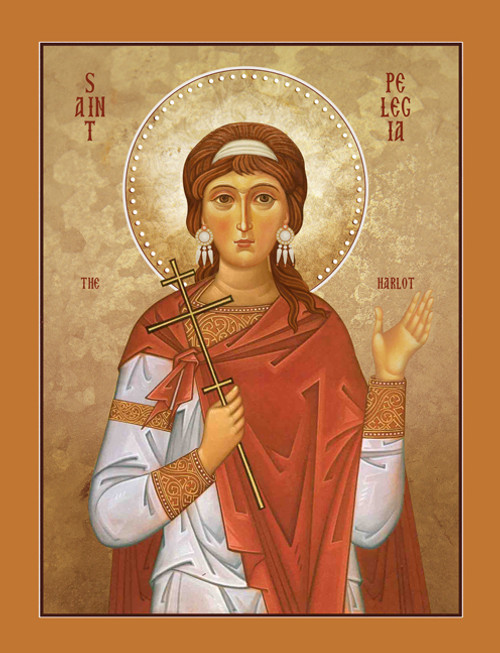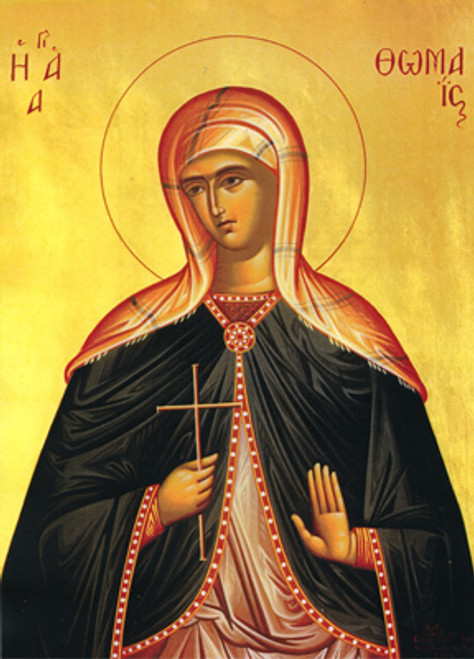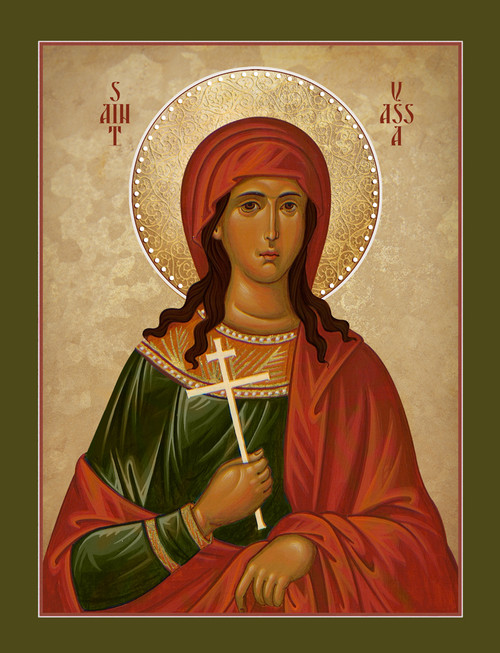Commemorated on October 8
Pelagia's story is attributed to James or Jacob (Latin: Jacobus), deacon of the church of Heliopolis (modern Baalbek). He states that Margarita was the "foremost actress" and a prominent harlot in Antioch. During one of the city's church councils, she passed by on a donkey surrounded by her entourage and a "worldly crowd". Perfumed and "immodestly bareheaded", the outlines of her body were "clearly visible" beneath her gold cloth, pearls, and precious stones, which ran from her bare shoulders to her feet. Most of the fathers were shamed into looking away, but the bishop Nonnus stared openly and confessed himself "delighted". Mocking his fellows, he condemned both them and himself for taking less care of their souls than she had of her body.
She appeared at his next Sunday sermon and Nonnus's sermon on hell and the goodness of paradise prompted her to repent. She had two of her slaves trail Nonnus to his residence and then wrote him on wax tablets, calling herself "sinful" and a "servant of the devil" but seeking mercy from God, who "came down to earth not for the sake of the righteous but to save sinners". Nonnus replied to the anonymous request that God knew her and her past and that he would receive her, but only in the presence of the other bishops.
She went to the basilica of Saint Julian to see them; when Nonnus demanded surety that she would not return to her former life, she fell to the ground and threatened that if she were refused admission to the Church, all her future sins would be held against him at his judgment. The archbishop was informed and sent the deaconess Romana to clothe her in the baptismal gown. Nonnus took her confession and baptized "Margarita" under her birth name Pelagia, with Romana serving as her godmother.
The devil shortly afterward arrived to complain, but was driven off when Pelagia made the Sign of the Cross and breathed upon him. He returned the next night to renew his complaints and was driven off the same way. On the third day, Pelagia directed her steward to inventory her possessions. She then turned them over to Nonnus, who disbursed them to the widows, orphans, and poor of the city. She freed her slaves, male and female, "taking their golden torcs off with her own hands". She then began living with Romana.
The night before it came time to remove her baptismal gown, she stole out in the dark wearing one of Nonnus's chitons. She headed for Jerusalem, where she built a cell on the Mount of Olives. She lived there for three or four years, disguising herself as a male recluse and eunuch under the name Pelagius. She then died, apparently as a result of extreme asceticism, which had emaciated her to the point she could no longer be recognized. According to Orthodox tradition, Pelagia was buried in her cell. Upon the discovery that the renowned monk had been a woman, the "holy fathers" tried to keep it a secret, but the gossip spread and her relics drew pilgrims from as far off as Jericho and the Jordan valley.







